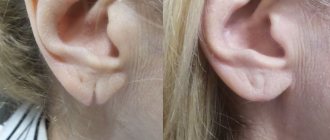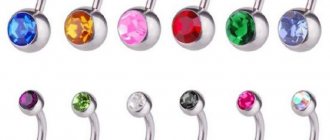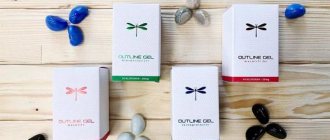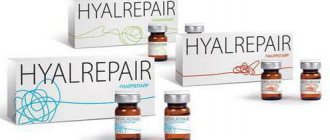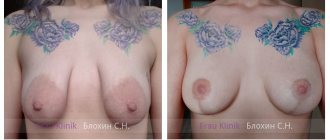Installing permanent jewelry in the cheek is a non-standard type of biomodification, but in the youth subculture it is a fairly popular way to attract attention and express one’s individuality. Cheek piercing is done between the cheekbone and lower jaw, and there are several generally accepted piercing points:
- in the area of the buccal muscle (in place of the so-called dimples);
- closer to the corner of the mouth (in the area of the muscle that depresses the corner of the mouth);
- in the area of the orbicularis oris muscle.
Many people find moles on the face attractive and use round metal jewelry to imitate them. As a result of wearing them for a long time, a small scar is formed in this part of the face, which resembles dimples.
Photo
You may be thinking about getting a cheek piercing but aren't sure what it would look like. If everything is done correctly, it will be fashionable and stylish. Look what Amanda Bynes looks like with a cheek piercing. Here are some photos of her. Do you like this type of piercing?
Amanda Bynes
Cheek piercing and microdermal cheekbone (when only one non-through hole is made in the skin and the jewelry is placed intradermally)
More visible decorations
Superficial cheekbone piercing (when the barbell comes out on both sides)
History of cheek piercing
Many types of skin punctures on the body and face appeared centuries ago.
Cheek piercing is not one of them, it is a modern body modification. It is known that many cultures practiced ritual punctures of the facial skin. Similar manipulations were carried out during religious rites and various holidays. The very fact of the puncture was important; jewelry was never inserted into the resulting holes. A striking example of such ritual piercing can be seen in Phuket (Thailand). Here, to this day, a vegetarian festival is held, during which mediums fall into a trance and pierce the skin of their cheeks with sharp devices. Civilized piercing has an indirect relation to this sacrament. The main purpose of skin piercing today is to decorate one’s own body.
Process and sensations
The cheek is quite thick and has a lot of blood vessels, so bleeding and slight pain may occur during the process. During the piercing, the technician needs to find your parotid canals and mark with dots the places you want to pierce (you need to avoid touching these canals). The master will ask you to rinse your mouth and prepare the skin for the external piercing.
He or she will then use a 14g or 16g needle and puncture from the inside to make the process easier. If you choose to pierce externally, you should have a plug in your mouth to prevent accidental damage to your gums, tongue, or other parts of your mouth. Finally, the jewelry is screwed on. To reduce pain, local anesthesia is applied 15 minutes before the procedure.
Description of the procedure
Skin punctures on the face should only be performed by specialists. Doing this type of piercing at home is very dangerous. There are a lot of nerve endings on the face. A careless puncture or an incorrectly chosen place for it can cause complete or partial paralysis of the muscles (distortion of the face).
Find a good piercing salon in your city and, only after making sure of the competence of the master, sign up for the procedure. Cheek piercing can be performed with local anesthesia at the client's request. The puncture is performed with a special tool into which the selected jewelry is immediately inserted. The procedure is quite simple and does not require any special preparation. Finally, the client receives care recommendations.
Microdermal
Microdermal Cheekbone Piercing
Instead of a conventional piercing, you can opt for microdermal cheekbone implants, which consist of two components: “an anchor that is implanted under the skin, with a footplate protruding from under the skin, with the option of replacing a decorative part that is screwed onto the footplate of the anchor”[Wikipedia .org].
Besides the cheeks, microdermals can also be placed anywhere on the surface of your skin. They do not leave much scarring after removal and are semi-permanent. However, caution should be exercised during the healing process as the body may begin to reject them over time, and complaints of headaches have also been noted.
Other benefits of intradermal microimplantation in the cheeks include a reduction in the “tendency to oversecrete lymphatic fluid, which has a saliva-like texture and may have a foul odor” [Wikipedia.org], and is typically seen with a full cheek piercing. Microdermal piercing also has lower rates of infection and no damage to teeth or gums.
Dimples piercing
Dimple and Cheekbone Piercings
A dimple piercing is a piercing that is placed in a naturally existing indentation, or “in approximately the same area, to simulate the appearance of a dimple” [tattoo.about.com]. This creates the effect of real dimples on the cheeks.
You can go for a full piercing, where the piercing is done all the way through, or you can choose an intradermal piercing (microdermal). The scarring process will happen in any case, and the cost will not differ much from the one we cited above. However, contact a specialist, since not every specialist can make a high-quality cheek piercing.
Cheekbone piercing or anti-eyebrow
Microdermal on the cheek bone.
Piercing in this place is also sometimes called “anti-eyebrow,” but this is not entirely accurate. Have you noticed people with cheekbone piercings? Have you ever thought about how it is made? Is it a superficial piercing or a microdermal piercing?
When piercing the cheekbones, you cannot pierce all the way through, so you need to do either a superficial piercing or a microdermal piercing.
Many people often confuse it with a type of piercing called an anti-brow, which is located above the cheekbone or under the eyebrow" [Wikipedia.org]. However, some sources refer to anti-brow piercing as a cheekbone or upper cheek piercing.
If you choose a superficial type of piercing, suitable jewelry in this case would be a labret, barbell, hoop earring and curved barbell. And microdermal piercing, as already mentioned, should only be done with a good specialist.
How much does cheekbone piercing cost?
The cost of cheekbone piercing will depend on the type of piercing. The cost of a superficial piercing will range around the average price, while microdermal implants cost between $70 and $100. Jewelry will cost up to $20.
Through skin puncture with labret installation
The traditional version of cheek piercing is a through puncture of the skin followed by installation of a special decoration (labret) in the resulting channel. Typically, this body modification depicts natural “dimples.” The punctures are made symmetrically in the middle or lower part of the cheeks. For this type of piercing, only labrets are suitable - jewelry that has a flat circle at one end for fixation and a decorative element at the other. This piercing does not injure the teeth and tongue. When piercing the cheeks, it is not recommended to remove jewelry for a long time, as in this case the channel may heal in a matter of days.
Swelling and pain
The pain from a cheek piercing is not very severe, it can be compared to the pain from a lip piercing. On a scale of 1 to 10, where 1 is painless and 10 is very painful, it will range from 3 to 5. Swelling may occur after the puncture, which often makes eating difficult because it is painful. The swelling will go down in a few days and in a week or two you will be able to smile fully. For some people, the swelling may last longer.
To minimize swelling, you can try sucking on an ice cube, applying cold compresses, taking anti-inflammatory medications, drinking cold liquids, and you can also try traditional anti-inflammatory remedies such as chamomile tea and recipes containing arnica gona.
What is a cheek piercing called?
In English, this type of piercing is called “cheekpiercing” or “dimple”. In Russia it is simply called “cheek piercing” or “dimple piercing.” This type of puncture is not yet very popular in our country, so it does not have any other name.
These punctures are called “dimples” because of their location. Piercings are injected in those places where, when a person smiles, small pits form on the cheeks.
It is believed that these piercings can help form these dimples once healed for those who do not have them.
Care and healing time
Healing usually takes 8 to 12 weeks. However, the process can take more than 6 months, and sometimes more than a year. You can replace your jewelry after 6-8 weeks. As a general rule, the less often you change your jewelry, the better the holes heal.
To minimize the chance of infection and speed up healing, clean the piercing site, both the inside and outside of the cheek, using a saline solution twice a day. To clean the outside, you can also use a variety of products such as Piercing Healing Spray or H2Ocean Rinse. Use a cotton swab to thoroughly clean the piercing for about 5 minutes. To clean your mouth, rinse your mouth with a sea salt solution for about 5 minutes and maintain good oral hygiene, including using an antibacterial alcohol-based mouthwash.
During the healing process of the cheek, it is necessary to carefully care for the puncture site to prevent infection, the formation of keloid scars and other complications. Great care is required in the initial stages of treatment. The following postoperative care procedure is recommended:
- Men should shave carefully to avoid injury.
- Avoid smoking and drinking alcohol.
- Avoid touching the jewelry with your teeth or chewing gum.
- When applying makeup and hairspray, women should cover the piercing site to prevent it from being affected.
- For bruises or infections, try tea tree oil.
- Participation in physical activities that may cause injury should be minimized.
- Avoid eating spicy foods.
- Avoid touching jewelry.
Normally, clear white discharge may be present. If the secretion becomes yellow or green, this may indicate an infection. In this case, you need to consult a doctor.
Cheek piercings
Dimples are considered a characteristic feature of an attractive face, and some people want to enhance or create dimples through piercings. Unfortunately, this area of the face contains many significant structures, including large blood vessels, nerves, and the parotid duct (the largest salivary gland), and if any of these are impacted, the consequences can be catastrophic. If you decide to get rid of your piercing, it may result in permanent scarring and excessive wrinkling of the skin.
We encourage our clients to think twice before agreeing to a cheek piercing. But if you are determined, read the story of Elaine Angel, president of the Association of Professional Piercers of the United States and author of the book “Encyclopedia of Piercing.” Perhaps after this you will decide to pierce in another place.
“I started piercing professionally in the 1980s; and the worst thing that has ever happened in my career over these 30-odd years happened to me. On November 13, 1998, I got my cheeks pierced to celebrate a significant event in my personal life. The puncture was made in natural depressions that appeared the moment I smiled. For years I dreamed about this and imagined how graceful diamonds would sparkle in my dimples.
The right jewelry for piercings - what are they?
I carefully marked each side. I illuminated the cheeks with a powerful flashlight, pressed on them and thoroughly felt the tissue with my fingers. I did not see or feel any anatomical structures that would interfere with the piercing.
My dimples are quite far away so getting them pierced was a challenge, but I was very happy with how it turned out. I took care of the piercings using standard methods and experienced normal swelling with no bleeding. The healing course was quite long, as expected, but everything went without complications.
About a year and a half after I got the piercing, something started leaking out of the right piercing, and I couldn’t figure out what was happening. Periodically, a drop of transparent, tasteless and odorless liquid flowed out of the puncture, moistening my cheek. I thought I had an allergy and changed my soaps and detergents. Then it seemed to me that the problem was in the dyeing, and I changed the balls to large disks. Time passed, and my condition only worsened: my cheek began to drip, it became inflamed and cracked from fluid; besides, I constantly had to wipe it off.
I went to my dentist for help. I turned to maxillofacial surgery. My parotid gland and ducts were working fine without any problems. This was good news. The bad news was that the parotid duct had opened into the piercing canal. The doctors’ verdict was clear: “Get those things out of there.”
But I didn't listen. The leak became even stronger. Eventually, it got to the point where the liquid was running down my cheek and falling straight onto the person I was about to pierce. Naturally, it is unacceptable for a piercer to exude bodily fluids in the immediate vicinity of a client’s fresh piercing.
This was the last straw, and so - although extremely reluctantly - I pulled out of the dyeing and decided to heal my punctures in my cheeks.
Unfortunately, even after I took out the jewelry, my right cheek continued to leak; this horror lasted for several months. It was clear that to solve the problem, it was necessary to act using more radical methods. I used a medical instrument called a cautery (a cauterizing scalpel) to close the hole by creating scar tissue (this is not a service offered by piercers!). It worked, but after a few weeks the hateful liquid started running down my cheek again.
The puncture finally healed only after the third cauterization, when a deeper and more serious burn was created.
So this is what I mean. When people come to me and ask for cheek piercings, I tell them this story and, naturally, I say “No.” I will never pierce anyone's cheeks beyond the first molars. And, for obvious reasons, you shouldn't either.
The piercing procedure should proceed approximately according to the following scheme:
1. The client chooses the jewelry he likes from those proposed by the master.
2. The master advises the client on what he cannot do for some time after the puncture (eating very spicy or very salty food, drinking too hot tea or coffee, drinking alcohol, smoking). She also learns about the nuances of the client’s health that may affect the piercing or its healing.
3. The master takes the jewelry to be sterilized in an autoclave along with napkins, a disposable piercing needle and gloves.
4. While sterilization is in progress, the client fills out a questionnaire in which he provides detailed information about his health and studies the care instructions, which he takes with him.
5. Sterilization is complete. The client goes to the office.
6. The technician takes out sterilized instruments, treats the puncture site with a disinfecting surgical scrub, puts on sterile gloves and marks the puncture site.
7. A sterile disposable needle is used to make a puncture exactly along the markings, and the jewelry is inserted immediately after the needle.
How to do a piercing at home?
FAQ:
— CHEEK PIERINGS – DOES IT HURT?
Not much more painful than an accidental bite, and happens just as quickly
— HOW LONG DOES A CHEEK PIERING TAKE TO HEAL?
This is one of the longest and hardest types of piercing to heal, so you should be prepared for the fact that even after six months it can cause discomfort. The main swelling subsides in 2-3 weeks, but it may not go away completely even after six months. The reasons are the greater mobility of the puncture site and the proximity of the salivary glands to it - all this creates not the most favorable conditions for healing. And if the salivary gland was damaged during the puncture, it may never heal completely. If you need to shave/make up, during this entire time you should do it very carefully, without tugging at the jewelry or introducing cosmetics into the still fresh piercing.
— DOESN'T YOU NEED TO CONSTANTLY SCROLL THE DECORATION?
In no case. Jewelry made from implantation titanium has a hard, smooth surface, and the mythical “ingrowth” cannot occur. But you can easily tear off crusts of dried natural secretions from a still fresh wound so that the still fragile tissue of the piercing canal begins to scar.
— WHEN CAN YOU VISIT THE BATH/POOL/SAUNA/SOLARIUM?
A fresh piercing already has to deal with sweat and dust, so you shouldn’t expose it to unnecessary external irritants for as long as possible. The minimum terms are 2 weeks for a solarium, 4 weeks for a swimming pool, and 6 weeks for baths and saunas. After this period, you can slowly start going there, but cover the puncture with a band-aid for the duration of the visit, and immediately afterwards wipe it with an antiseptic.
— WHAT SHOULD THE PRIMARY DECORATION BE?
Straight rods (labrets) with a thickness of 1.6 mm and a length of 16 mm (depending on the thickness of the cheek at the puncture site) with a flat disk on the inside and a ball or wrap with a stone on the outside are installed into a fresh cheek piercing. The diameter of the disc and the twist should not be less than 4 mm (or better, from 5 mm), since small twists can sink into the cheek during swelling. After the swelling subsides, the primary decoration will become large, and it is better not to delay it and replace it with a shorter one so that it does not injure the teeth and gums when eating and talking.
It is better to do this with the help of a specialist, and not on your own - firstly, at such an early stage, the new jewelry should be sterilized; secondly, it is not very handy, and you can injure the walls of a canal that has not yet healed. And then you need to monitor the sensations, and if it seems that you could put an even shorter decoration, repeat the replacement by one or more sizes. Using the trial method, you can determine the optimal length, and in the case of cheek piercings that take a long time and are difficult to heal, you may need quite a lot of such replacements.
— DOES CHEEK PIERINGS INTERFERE WITH KISSING AND HAVING ORAL SEX?
With a very fresh puncture, we do not recommend doing this at all, since no matter how much confidence you have in your partner, there is always a risk of transmitting STDs through contact with your partner’s fluids. Moreover, if your partner is healthy, this does not mean that he is not a carrier of the infection.
Starting from the 3rd week, you can already return to a full life, but do not forget that the less you disturb the puncture, the faster it will heal. The best rule is to listen to your body: if something hurts you, don't do it.
— I HAD A CHEEK PIERCING AND NOW I CONSTANTLY FEEL AN UNPLEASANT TASTE. HOW TO FIX IT?
This happens if you wear jewelry made of material that is not suitable for piercing. Impurities contained in gold from jewelry stores, silver and surgical steel can react with the microflora of the mouth and begin to oxidize. Replacing the jewelry with titanium or gold (if its alloy does not contain nickel) usually solves this problem.
— AND MY GUMS/TEETH/PALATE HURT, AND I HAVE A PLAQUE APPEARED ON MY LANGUAGE!
And here the problem is most likely in the antiseptic and/or rinse aid. Everyone's oral microflora is different, and the same antiseptic or hygienic rinse can have different effects on different people. When the mouth rinse is not suitable, it can disrupt the microflora of the mouth, and because of this, a reaction appears, it is called stomatitis. In this situation, simply try changing the rinse aid to another one from the list provided in our care brochure.
— WILL CHEEK PIERINGS HELP ME GET MY TEACHED DIMPLES?
It depends on how much you go through with it. The dimples will appear and remain provided that a scar of such density has time to form around the jewelry that it will not dissolve to zero when the jewelry is removed, but will only tighten. Then, at the puncture site, a denser and, as a result, less elastic tissue will remain, which will slightly “tighten” the cheek, forming cute dimples. This process usually takes about 3 months.
— IS IT TRUE THAT YOU CAN HURT AN IMPORTANT FACIAL NERVE AND DAMAGE YOUR FAMILY?
Nerve - no, but muscle - easily. That is why (and for a dozen other reasons described in detail in these articles) you should not get cheek piercings yourself, from cosmetologists, home “masters” and even in studios specializing in piercing, if they cause you even the slightest doubt about their professionalism. And in this case, the professional will first ask you to change your mind, telling you about all the pitfalls of this type of piercing, and only then study the price list and shop windows.
Cheek piercing
Piercing Care Instructions
Sign up or contact the master
Jewelry and clips
In most cases, a regular barbell is used as decoration to avoid pathological growth of cheek tissue. As an alternative, you can also use a lip earring size 16 to 12 with a flat back. The flat back reduces the chance of gum and tooth damage. However, during the healing process, the flat back of the stud may become embedded in the skin and will need to be surgically removed. Therefore, it is better to choose jewelry with a ball instead of a flat back, specially made of acrylic or soft material.
The length of the jewelry is usually about 1 inch (or 18-24 mm), but on average it varies from 0.5 to 1.5 inches, thereby reducing the possibility of tissue damage from a very short barbell immediately after the procedure. The thickness of the cheek can also influence the choice of the appropriate length. Short jewelry can put pressure on the tissue at the piercing site, causing the tissue to die, a condition known as necrosis. Once the piercing site has completely healed, shorter jewelry, usually 16-18mm in length, can be used to reduce damage to the gums and teeth and prevent accidental biting.
Piercing jewelry can be purchased at any online store, for example, international eBay, amazon.com, aliexpress.com. The most popular jewelry has a bar length of 1/4 to 2 inches, (with 3/4 or 5/8 measurements) and can also be set with gemstones up to 4mm on the outside and a ball up to 3mm on the inside. This can be a curved barbell for lip piercing, or a regular straight barbell; a ball with a precious stone can be part of the jewelry, or it can be a separate part.
You can choose jewelry made from any material such as diamond, gold, steel, etc. However, avoid using low quality materials as they tend to cause allergic reactions. To begin with, it is recommended to purchase a soft BioFlex (PTFE) rod. This minimizes damage to teeth and gums.
If you need to temporarily remove jewelry, such as at work, school, church, or family gatherings, or need to insert non-metallic body jewelry for medical procedures, make sure you have a good replacement item. There are many clear and flesh-colored retainers available on the market, made from silicone, acrylic, bioplastic, etc., that can effectively hide the piercing.
Size chart
To give you an idea of the ideal piercing length, below are the jewelry sizes. Factors such as cheek thickness can influence what length is ideal.
How to do a cheek piercing yourself?
Cheek piercings are not recommended to be done on your own if you lack the skill. It is better to contact a professional, because there is a high risk of damage to the salivary gland and infection.
If the decision to make a puncture with your own hands has been made, it is important to follow all precautions and perform any actions strictly according to the instructions.
What you will need:
- disinfectant (Miramistin, Chlorhexidine, peroxide);
- mouth rinse;
- barbell made of silver or gold;
- catheter;
- cotton pads and lint-free bandages.
It is important to pay attention to the quality of the bandages that will be used to treat the holes. No fibers should get into the wound.
Mouthwash
A rinse aid is needed for a through puncture. It is important to disinfect the oral cavity so as not to introduce infection into an open wound.
In salons, 3 trusted manufacturers are most often recommended:
- Lacalut Aktiv 300 ml bottle. The average price for 1 bottle is 300 rubles.
- SPLAT liquid volume 270 ml. Costs about 190 rubles.
- PresiDent Active in a bottle of 250 ml liquid. The price varies from 200 to 270 rubles.
You need to use the mouthwash constantly until the wound heals completely.
Choosing a catheter or needle
The puncture can be performed using a special piercing needle or catheter. The tool is sold in pharmacies or online stores.
The needle is selected according to size. It is necessary that its length is sufficient for a through puncture, and its diameter corresponds to the size of the decoration’s stem.
| Dimensions of catheters and needles, mm | |
| Diameter | Length |
| 2,1 | 45 |
| 1,8 | 45 |
| 1,5 | 45 |
| 1,3 | 45 |
| 1,1 | 33 |
| 0,9 | 25 |
| 0,7 | 19 |
| 0,6 | 19 |
The needle must be disinfected before use.
Place of puncture
It is necessary to determine the place where the needle will be inserted. If it is a through piercing or microdermal, you need to smile in front of the mirror and use a special marker to put dots where the pits form.
For a superficial piercing, you should grab a fold of skin with your fingers and make 2 marks where the needle will be inserted and where it should come out.
Piercing algorithm
Once everything you need has been collected and the piercing mark has been installed, you can begin the piercing.
Step-by-step instruction:
- You need to take a painkiller tablet 20 minutes before the procedure.
- Clean your teeth and tongue with a plastic scraper.
- Rinse your mouth with a special product 2 times.
- Disinfect the needle and decoration.
- Wear gloves and treat the skin at the puncture site.
- Slowly insert the needle.
- Make sure it goes right through unless it's microdermal.
- Treat the puncture on both sides with a disinfectant solution. Stop the bleeding.
- Insert the decoration into the hole and screw it on.
- Rotate the bar several times.
- Treat the skin with a disinfectant solution again.
- After an hour, you need to apply a healing ointment to the wound.
Experts advise doing the puncture in the evening, after the last meal. Overnight, a protective film forms on the edges of the wound, which will prevent infection from developing.
How is it done, how much does a cheek piercing cost in a salon?
Cheek piercings are performed by masters following the same procedure. The specialist puts on gloves and processes the instrument, jewelry and leather. Places a mark at the puncture site, takes a needle and makes a hole. The salon can offer good anesthesia for a fee. Before making a piercing, the master will place 1 or 2 injections in the area where the piercing will be.
The average price of a puncture is from 1500 rubles. You still need to buy jewelry. It can cost from 500 to 1000 rubles. Anesthesia in salons costs about 300 rubles. In total, 2 punctures on both sides will cost about 5,000 rubles.
Scars and their removal
Scars are an unpleasant consequence of any piercing, and the cheeks are no exception, since a scar will form at the puncture site. According to Stephen Wallach, MD, a plastic surgeon in Manhattan, "all body piercings result in scars." Over time, the scar may become smaller, but it will not completely disappear on its own [realself.com]. It's worth noting that post-operative care, as well as your skin's reaction, can determine the size of the scar.
The next question that may interest you is the treatment of scars. Stephen Wallach o. In most cases, the scar will heal on its own over time.
However, if the scar is very noticeable and pronounced, you may want to undergo corrective surgery. However, there is no guarantee that the scar will be completely eliminated. As Richard H. Tholen, a plastic surgeon in Minneapolis, points out, "There is no surgeon or surgical technique that can completely remove scars."
Photo of cheek piercing scars
These photos will give you an idea of what cheek scars look like after piercing. They are more visible after the decoration is removed. However, after correction they become almost invisible.
Before and after scar removal
Possible complications
When performed correctly and with regular care, cheek piercings heal quickly and painlessly.
A normal occurrence in the first days after a puncture: local swelling, discharge of lymph and ichor, increased salivation. If the described symptoms persist for a long time, contact the piercer. Sometimes punctures take a long time to heal and “do not take root” even if all the rules are followed. Some fans of body modifications do not despair in this case; some time after the unsuccessful piercing has healed, they try to do it again. Cheek piercings can also have consequences in the form of small scars. From through punctures, the marks remain less noticeable than from the installation of microdermals. Usually healed scars are barely noticeable, sometimes they resemble natural “dimples” on the cheeks.
Facial piercings cannot be done at home. The success of the puncture depends largely on the correct location and sterility. A non-professional cannot ensure that these two conditions are met during a home procedure.

